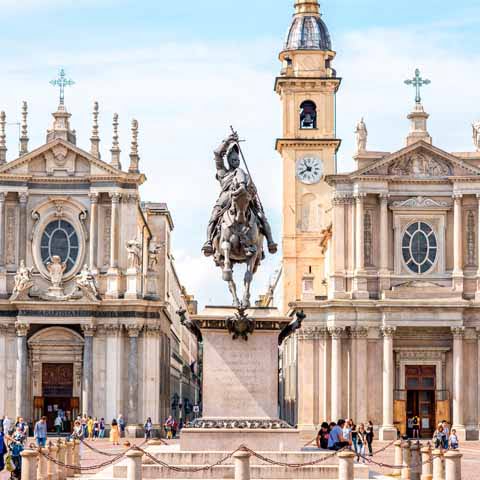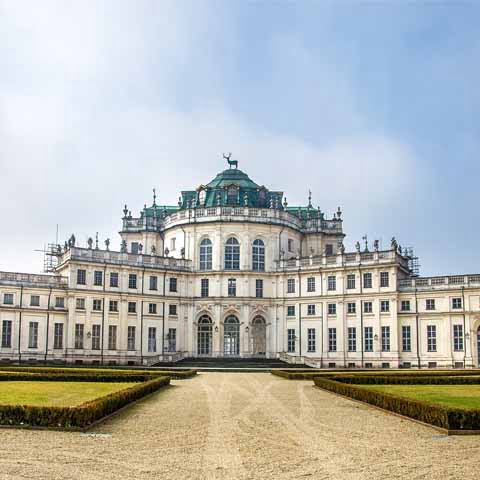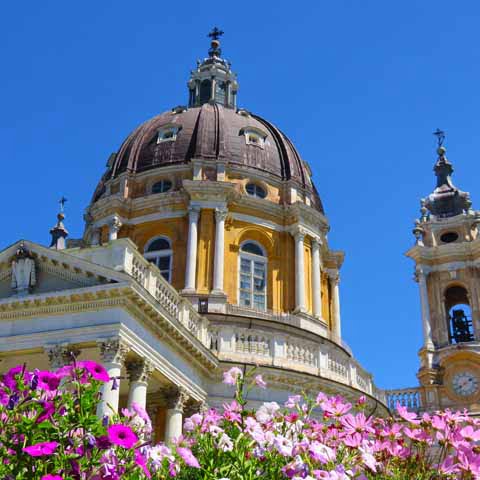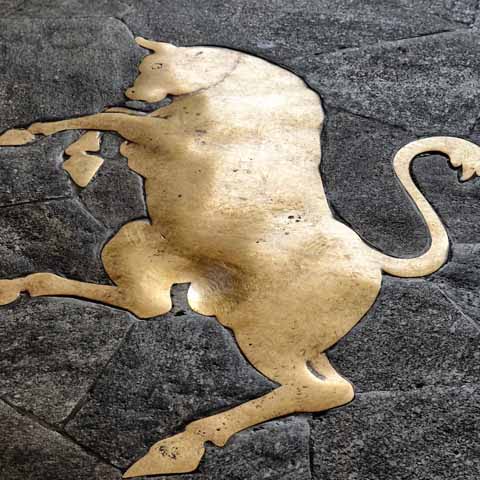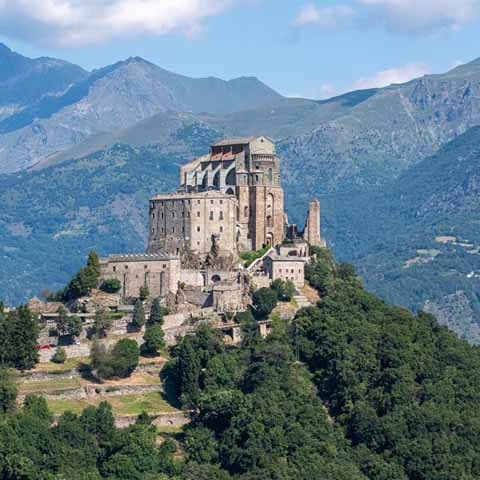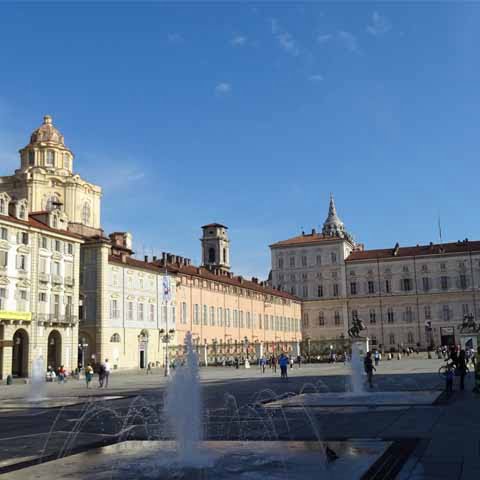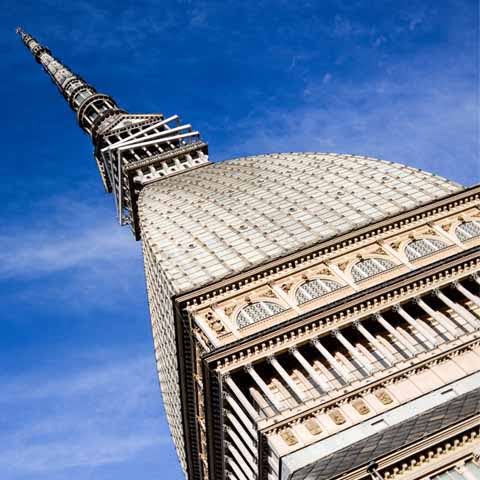In the far northwest section of Italy is the stunning and lively city of Turin. With the majestic mountains rising from the background of this gorgeous city, the impressive architecture of local buildings, fabulous museums, cafés, stately palaces, and wonderful open-air squares make Turin a city of great beauty and culture. Whether you are visiting for a day or staying for a week, the delights of this thriving Italian city await you.
For this large city, which is abundant in culture, it is no surprise that its roots can be traced all the way back to the Romans in the late BC period. In the ensuing years, the city underwent the rule of various people and regimes. During that time, Turin served as a major European political center as well as the capital of the Duchy of Savoy and the first capital of the unified Kingdom of Italy from 1861 to 1865. Though Turin was heavily damaged during World War II air raids, the city was quickly rebuilt and kept moving forward.
Over the years, Turin has expanded greatly and today it is divided into eight main circoscrizioni, or boroughs, and several historic districts. As one might imagine, the city has long since been a hub for commerce, industry, and trade and is now one of Italy’s top performing economies. In the first quarter of the twenty-first century, Turin was recognized as a Gamma World City as a nod to its connection to the world economy.
With the flourish of industry and business here, it is only natural that the city be home to some of Italy’s most outstanding colleges and universities. The University of Turin is one of the city’s most attended educational facilities and one of the oldest universities in Europe. The institution has produced a number of distinguished alumni, some of which became writers, Nobel Prize winners, and prime ministers such as Italo Calvino, Rita Levi-Montalcini, and Giovanni Giolitti. The city is also home to a number of other universities and academies, such as the Polytechnic University of Turin, Italy’s oldest technical university.
Culture is the heartbeat of Turin. A number of local museums dot the vast cityscape, providing historical insight into the city’s rise and those who have been a part of it. Amazing architecture, impressive art collections and royal history are all huge draws to the city, but one of the most world-renowned religious artifacts housed in the city is the Shroud of Turin. This ancient piece of cloth is said to bear the negative image of a man who suffered death by crucifixion, one that some believe to be the image of Jesus of Nazareth. Held in the Cathedral of Turin since the sixteenth century in an airtight case, the Shroud is occasionally displayed to the public during special events such as a Jubilee year.
Among the approximately 40 museums located in the city of Turin, not to be missed is the Museo Egizio, or Egyptian Museum. This expansive museum hosts one of the largest collections of Egyptian art and artifacts in the world after the Egyptian Museum in Cairo. The Mole Antonelliana, Turin’s most iconic landmark, houses another important museum: the National Cinema Museum. As the most important museum of its kind in Italy, the National Cinema Museum houses 20,000 cinema artifacts (including devices and paintings) as well as 12,000 film reels. The panoramic elevator takes visitors to the top of the Mole Antonelliana where they can admire the best panoramic views of the city.
In addition to culture, Turin is also part of the sports world. The city has two soccer teams that have a huge following among local and international fans: Juventus F.C. and Torino F.C. This sport is beloved by residents and lively rivalry exists with neighboring powerhouse cities such as Milan. Switching gears to sports played in colder seasons, Turin was the site of the much-anticipated Winter Olympics in 2006, an event that revitalized the city and cemented its status as a key travel destination.
For those that plan to take advantage of authentic Italian food and delicacies during their vacation, look no further than the city of Turin. Whether you enjoy chocolate, creamy espressos, pastries, or hazelnuts, this city does not disappoint. Bakeries here have beautiful window displays of their confections, making a trip inside hard to resist. And that is only for dessert. As the capital of Piedmont, which is renowned for its wine, fresh pasta, meat dishes, and risotto, Turin is the place to sample the best of the regional cuisine.
GEOGRAPHY
Turin is tucked away into Northwestern Italy and is located within the Piedmont region. The mountains of the Alps rise above the city on the north and west sides, and the Monferrato hills flank the east side of the city. These scenic backdrops make Turin a lovely paradox of a large and thriving metropolis tucked away amidst some of the most beautiful natural scenery in Italy.
In addition to elevated terrain, Turin is also home to several large rivers including the Po, Dora Riparia, Sangone, and Stura di Lanzo. The Po, as well as several of its tributaries, flow through the city before connecting with other cities and eventually the Adriatic Sea.
The mountains, hills, rivers, patches of greenery, and grids of homes and buildings all combine to provide a breathtaking aerial view of this enchanting city. This, combined with its royal history, has earned Turin the nickname of “Paris of Italy” in many circles.
CLIMATE
Turin is typically less humid and warm than many of its eastern counterparts. Summers are generally mild to sometimes hot and winters can be fairly cold with snowfall.
The high temperatures and reasonable rainfall amounts make Turin a fabulous summer vacation destination. Highs tend to hover around eighty degrees Fahrenheit and lows generally in the fifties or sixties. The weather is warm enough during the day that a cool and creamy snack of gelato could be in order, but the nights can get cold enough that a light jacket might be needed.
On average, in the winter Turin is much colder with a typical high temperature in the forties or fifties with lows closer to the thirties. However, even if touring the city in the winter, the fabulous museums, churches, cafés, and other indoor activities can provide a respite from the cold.
Historically, the late spring and fall months usually bring Turin’s highest rainfall totals, while the summer months typically boast the most amount of sunshine each day. Regardless of what season you choose to visit this amazing city, there is always a way to enjoy it.
ONLY IN TURIN
Turin is largely known for being the headquarters of prestigious Italian car companies such as Fiat, Alfa Romeo, and Lancia. Because of this history, the town is home to the Museo dell’Autombile, large outdoor car shows, and the former Fiat car factory, Lingotto, which today is home to Fiat’s administrative headquarters as well as a modern shopping complex.
Whether Italian-made cars are your passion or just something that might be fun to see one afternoon, the city of Turin is the place to be. To get a true feel for the Italian automotive industry, consider a visit to Museo dell’Automobile first. Here, visitors can experience an education about the automobiles as well as new technologies. One of the best parts of the museum is checking out the models and displays located throughout. The museum is estimated to have a collection of roughly two hundred cars. Car enthusiasts can also make a stop at Lingotto and head to the rooftop where the original Fiat test track still stands.
In Turin, cars are such a large part of the city’s identity and history here that it is not uncommon to see open-air car shows with dozens of different automobiles represented. Most of these shows attract thousands of visitors and last several days. Cars are usually on display in a semi-sheltered open-air exhibit, which allows people to see the cars from many different angles. Because of the size and scope of such an event, these shows are usually a joint effort of several different groups. This is a fantastic way to see amazing cars like the Lamborghini in person and picture how you might look behind the wheel.
For incredible views of Turin, take the tramway up to the Basilica of Superga, a historic church just outside of Turin. Dating back to the eighteenth century and designed by famed architect Filippo Juvarra, the church is renowned for its Late Baroque and Neoclassical style. The church is also home to the Royal Crypt of the Savoy Family.
Lastly, to learn more about the city’s royal history, head to the Reggia di Venaria Reale, which is located approximately 10 miles north of Turin. As one of the former residences of the House of Savoy, this expansive palace is a masterpiece of Baroque architecture and home to beautiful works of art and lovely gardens, rivaling the Palace of Versailles.
A city that feels both ancient and modern, Turin has plenty to offer its visitors from first-class museums and royal palaces to unique architecture and stunning natural scenery. Offering something for everyone, Turin’s unique atmosphere is guaranteed to enchant.
Travel Guides
The Piedmont Region of Italy
The Cities of Piedmont, Italy
